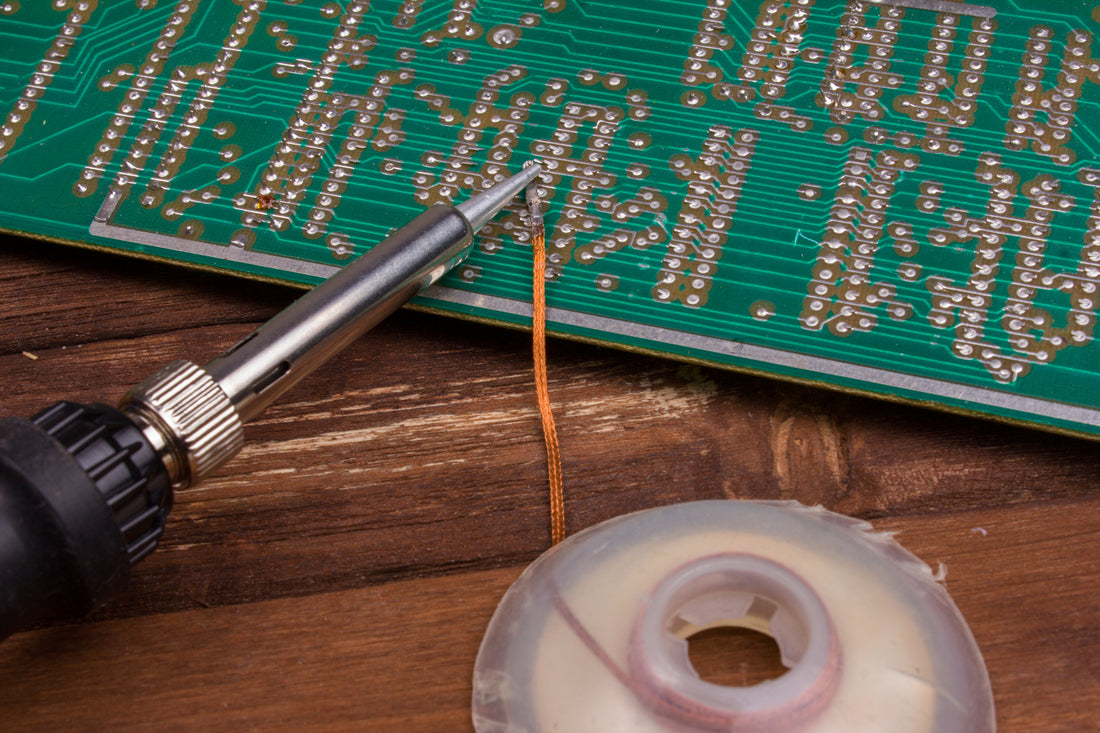Soldering is a great and effective way to join electrical components in a Circuit board or any other application. It can create reliable and strong joints. But, sometimes when you solder, it is done incorrectly or you need to install a different component. That is when desoldering takes place.
Desoldering is actually the opposite of soldering. You want to remove a component and desolder the joint by melting solder out of it. Desoldering is merely the process of melting the solder and then removing the joints or connections between two materials.
For electronic components, it is the process of removing the components that need to be repaired, replaced, or saved Otherwise, the components will get damaged in the process and you won’t be able to use them anymore.
There are a few different methods of desoldering. Each requires different tools and different processes. Similar to soldering, desoldering is a precise process; you need to follow some similar steps and use the same safety protocols as you would in soldering.
With desoldering, flux can be really helpful to get the solder to flow where you want it to go and it helps with the heat transfer. Rosin and no-clean flux are good options for desoldering.
As with soldering, make sure that you keep your soldering tip tinned and cleaned before starting the desoldering. It will help with the heat transfer.
Below are four different methods on how to desolder electronic components, including circuit boards and PCB:
1. Desoldering With A Soldering Iron
Desoldering with a soldering iron is the easiest way to desolder your components. The only other tools you need besides the iron is a pair of pliers or tweezers. Below are the steps to consider:
- Heat the solder by using the soldering iron until it starts to melt.
- Try nudging the pins with the soldering iron to move the solder away from the joints.
- Pull the components you want to remove with the pliers. Make sure to apply the pressure at the tips (not the bodies) to avoid damaging the components.
- It you need to remove the solder from holes, you can try sticking a safety pin inside the hole which can help release the solder. It will help you remove the components more easily.
2. Desoldering With A Soldering Wick/Desoldering Braid & Iron
A desoldering braid is a tool that is made of thin copper wires that are braided and typically covered with flux. A desoldering braid is used with a soldering iron to remove the solder from the joints and holes. The braid comes in rolls and in different lengths. It is also known as a solder wick or desoldering wick.
The desoldering braid is a good tool for cleaning up the extra solder from solder pads or if you want to remove the solder from the pins of a through-hole component. It is not the best method for desoldering surface mount (SMD) components, because it is difficult to reach the solder in between the lead and the circuit board.
Some of the soldering wicks have flux which can make it that much easier to remove the solder. It your wick doesn’t have flux, just dip the end of the wick into the flux to help remove the solder. Make sure to choose a solder wick that matches the size of the contact area.
When you handle the solder wick, don’t touch it with your hands and use a pair of pliers to hold and position it. The iron will be very hot. Try the following:
- Dip the end of the braid into some flux and place the wick on the joint you want to desolder.
- Place your soldering iron over the tip of the solder wick and the pin you want to remove.
- Once the solder melts, it will be drawn into the wick.
- With the solder wick, remove the part of the wick that has solder on it.
- Repeat the process above until you remove all the unwanted solder.
When the braid is filled with solder, trim that portion and move onto a fresh braid. Remove the iron and the braid at the same time so you don’t solder the wire to the board and damage the board.
3. Desoldering With A Soldapullt Pump and Iron
The Desolder pump is another popular tool to remove the solder from circuit board holes. It acts like a suction cup:
- First you need to preheat the board and soldered component until the solder is molten.
- Squeeze the handle and put the tip of the pump against the solder.
- Release the handle and it will suck the solder up from the circuit board hole.
4. Desoldering With a Power Desoldering Station
A temperature-controlled power desoldering station is another way to desolder effectively. The power desoldering stations have better control than the manual methods and are used primarily for larger desoldering jobs.
For instance, if a job were to require the removal of hundreds of components, a power desoldering station would be used.
There are many different types of desoldering stations and different methods on how to use them. Make sure to read the instruction manuals on how to use them properly.
Below are three different desoldering stations and what they are used for:
- Thru-Hole Desoldering Station for through-hole components.
- Hot tweezer stations that remove surface mount components from pads
- Hot Air Stations that blow 800-1000°F air onto SMT component pads to melt the solder with hot air, allowing SMT components to be safely desoldered.
These are just a few methods on how to remove soldered components that are effective and easier to apply than some of the other methods. With time and practice, you can find the best desoldering method for your need or application.

